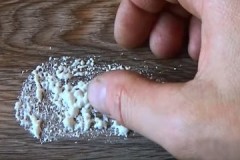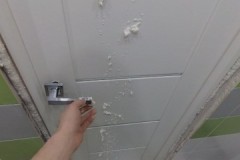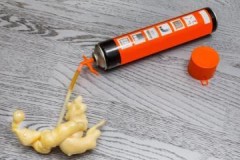Expert advice on how to remove foam from a metal door
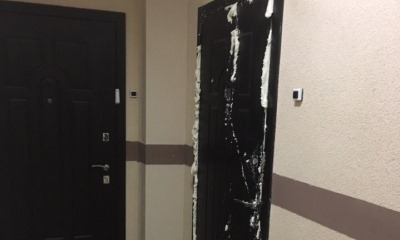 When installing an entrance door, you always have to use foam. Careless handling of building material leads to the fact that some of it falls on the canvas.
When installing an entrance door, you always have to use foam. Careless handling of building material leads to the fact that some of it falls on the canvas.
If you do not immediately take action, the composition will dry out and firmly adhere to the surface, spoiling the appearance of the product.
Read about how to remove fresh or dried foam from a metal door with improvised and special means, read the article.
Content
How to wash off fresh?
A special feature of polyurethane foam is that it hardens quickly. However, there is still time until the moment of complete polymerization. If the sealant did not have time to grasp the surface, you can remove it in the following way:
 Putty knife. If there is a lot of foam, its main part is removed with a plastic or wooden spatula, after which the surface is wiped with a clean cloth.
Putty knife. If there is a lot of foam, its main part is removed with a plastic or wooden spatula, after which the surface is wiped with a clean cloth.- Paper napkin dipped in vegetable oil... It is used to wipe the areas on which the foam has fallen, and then rinse it with warm water.
- Solvent. The simplest and most accessible composition is acetone. To treat a small area, a few drops applied to dry matter are enough. If you don't have pure acetone at hand, you can use nail polish remover.
Several factors affect the drying time of the sealant:
- quality of building material,
- its composition,
- air temperature,
- humidity of the environment and not only.
How to remove dried out means at hand?
You can cope with dried material with the help of available tools. However, weak substances are unable to soften the hardened sealant. It is necessary to use concentrated formulations.
You can get rid of the hardened sealant with Dimexide. This substance does not belong to the category of building materials, it is sold in a pharmacy, as it is used to treat sore joints. However, in a concentrated form, Dimexide copes well with polyurethane foam.
Mode of application:
- with a sharp knife, carefully cut off the excess foam;
- a sponge for washing dishes is impregnated with Dimexide;
- rub the stain with it for 2-5 minutes;
- the softened foam is washed off with a toothbrush.
First aid is also a solvent. To process a metal door, you can use a liquid under the number 646 or 647.
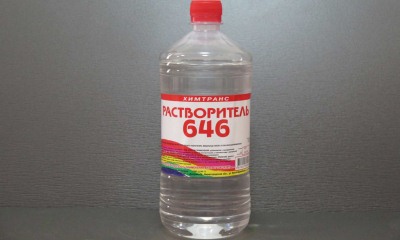 Procedure:
Procedure:
- Apply paint thinner to dry light-colored cloth.
- Treat the stained door leaf.
- Leave to act for 10 minutes.
- Remove product residues with foam.
- Wash the door.
The use of any aggressive formulation requires the protection of the skin of the hands with rubber gloves. Failure to do so can result in serious damage such as eczema or dermatitis.
Instead of Dimexidum, you can use White Spirit. It is an organic solvent obtained from petroleum refining. It will help to completely clean the surface of the metal door from foam, without harm to the leaf itself.
Mode of application:
- White spirit is impregnated with a sponge or colorless matter.
- Apply the composition to the stain, leave for 2-5 minutes.
- Remove softened foam with a scraper or stiff bristled brush.
- The remnants of building material are washed off with clean water.
You can try to remove the foam mechanically, such as with a plastic spatula or wooden scraper. This can be done quickly, but the result will be satisfactory only when processing a perfectly smooth surface.
If there are recesses on the door, they will be filled with foam that cannot be removed with a spatula. The disadvantage of this method is the high probability of damaging the canvas..
You can try to dissolve the foam with vinegar essence. For processing, they take concentrated acid, since table vinegar cannot cope with the stain.
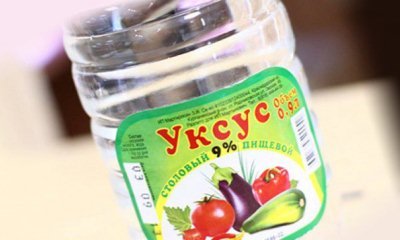 Procedure:
Procedure:
- put gloves on their hands;
- abundantly soak a sponge for washing dishes or a rag with the essence;
- the door leaf is treated with this composition;
- leave to act for 15 minutes;
- remove the foam with a spatula, rinse the door with clean water.
How to clean with special compounds?
You can get rid of fresh and dried polyurethane foam remaining on the metal door using store products. Professional solvents are on sale that have been developed for this very purpose. Top 3 best squads:
Cleaner Kraftool KraftFlex Premium Cleaner 41189_Z01
It is a versatile compound that able to quickly and without a trace remove the sealant from any surfaces... Its advantage is that it can be used not only for processing metal doors, but also for clothes.
The product does not contain freon. The price for a 500 ml balloon is 125 rubles.
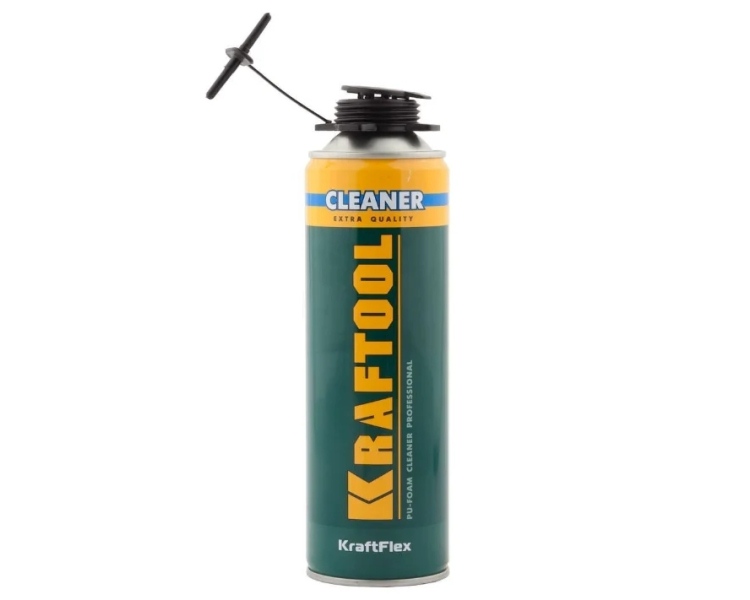
Stayer Profi 41139
Safe and easy-to-use cleaner suitable for processing various surfaces, including metal. The composition is active against foam, but harmless to other materials, so it can even be used for skin care.
The spray does not contain freon, does not harm the environment. Price for 500 ml - 120 rubles. Read reviews here.
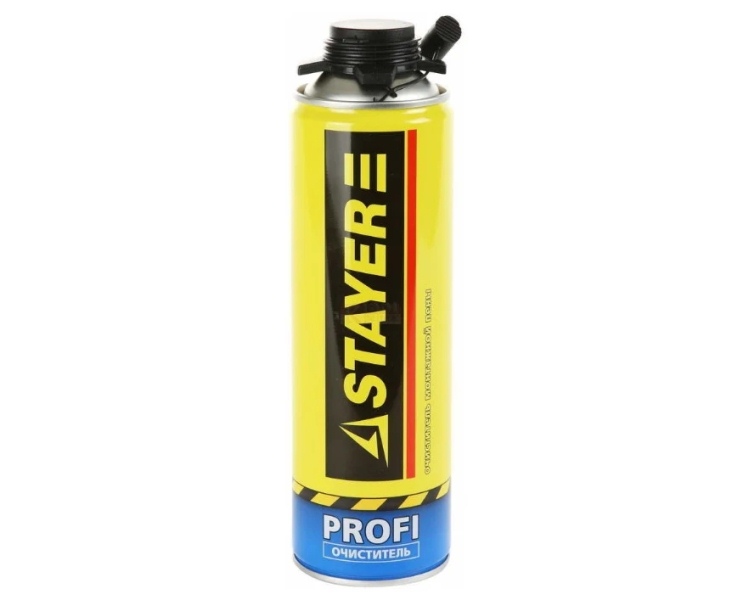
Starfix Foam Cleaner
The product is available in the form of a liquid poured into bottles... It is pressurized and applied as a spray. It can be used to treat various surfaces. The composition is active at temperatures from -10 to +30 degrees.
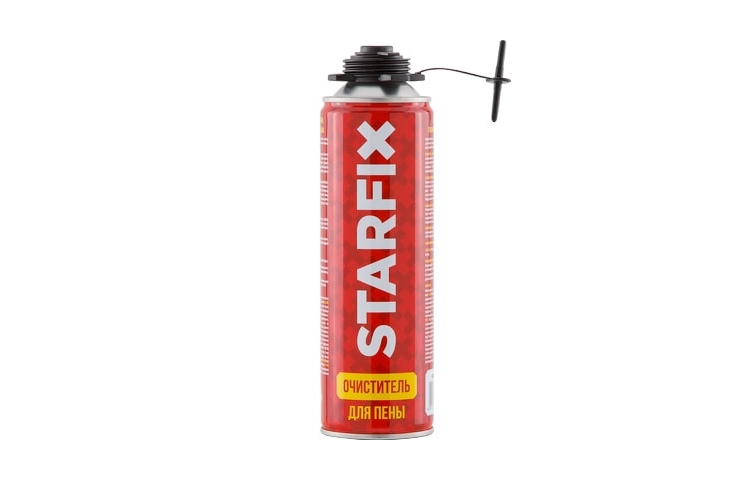
Before using the cleaner for the first time, you need to read the manufacturer's instructions and clarify how long it is safe to leave the product on the door. Most formulations are highly flammable, so you need to work with them away from open flames. Do not smoke when cleaning the door. Price - 500 rubles.
What should you not do and why?
In order not to harm your health and damage the metal door in the process of removing the foam, the following recommendations must not be violated:
- Do not use sharp spatulas and spatulas to remove foam. They can easily damage the surface. Scratches on a metal door are not the best decoration.
- Do not clean off foam with abrasive powders. They leave behind scuffs.
- A painted door should not be treated with solvent or acetone. Using these products may damage the coating.
- They work with aggressive substances with open doors and windows, using a respirator and gloves.
Helpful information
Recommendations to follow when removing polyurethane foam from an iron door:
- When removing excess sealant, do not smear it on the door. If there is a lot of material, the surplus is removed with a spatula and only after that the surface is treated with a rag.
-
 When using aggressive agents, for example, pure acetone, it must be tested in an inconspicuous area.
When using aggressive agents, for example, pure acetone, it must be tested in an inconspicuous area.If the paintwork reacts normally to contact with the substance, proceed to a full-fledged processing.
- The softened foam is removed from the door surface in small lumps. Therefore, the brush must be rinsed all the time. It will not be possible to clean it off in one go.
- The remnants of the building material must be removed completely, otherwise it will again grab onto the metal and the cleaning procedure will have to be repeated.
- When trying to clean a door, do not mix different substances. Their reaction can be unpredictable, which is why there is a risk of harm not only to the door, but also to their own health.
You will find useful tips and advice on how to remove polyurethane foam from various surfaces and objects here.
Related videos
How to remove mounting foam from a metal door, the video will tell you:
Conclusion
Removing foam from a metal door is easy if you use the right products. Mild cleaning agents come to the rescue if the sealant is not dry in the form of nail polish remover or vegetable oil.
You can cope with the seized composition with the help of more aggressive improvised or store tools.

